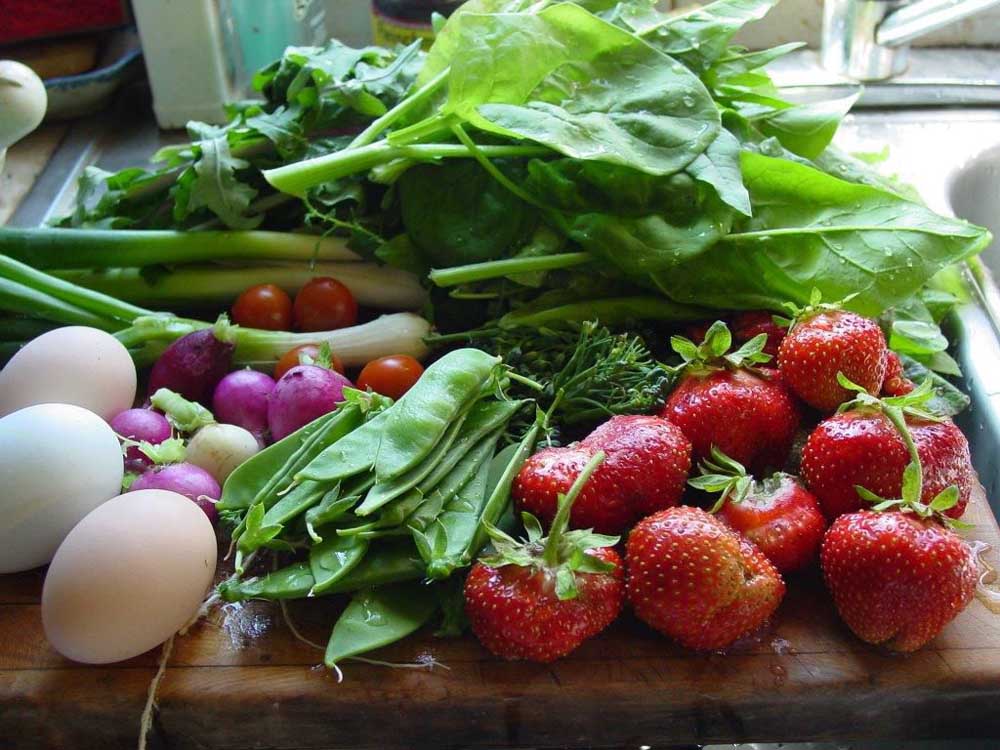Food with a Farmer’s Face
Published 12:00 am Saturday, March 5, 2016

- Supporting the Earth and One Another
For the past half-century or longer, the modus operandi of farming in the United States has been to grow farms bigger, farm food faster and produce larger yields for shipping domestically and abroad. While this model helps large companies create profits, it has some downsides for the consumer. This is why some consumers now buy fresh food directly from local farms, food that is more nutritious and healthier for the local economy and environment.
In response to demand, a growing number of Central Oregon farms now offer shares of their crops, called CSAs, to provide easy and regular access to farm-fresh food. CSA is short for Community Supported Agriculture, a practice that allows consumers to support local farms by paying directly for weekly supplies of fresh vegetables, meat, eggs and other products.
The concept for CSAs began in Japan, where it was called teikei, literally translated as a partnership or cooperation, but more philosophically translated as “food with the farmer’s face.” In 1965, a group of Japanese women initiated a cooperative relationship whereby local consumers contributed to their farms on an annual basis for a share of their crops. The concept spread to Europe and eventually to the United States, where it began to catch on in the early 1990s.
CSA programs provide a variety of benefits to discerning consumers. Just-picked vegetables taste better and have been proven to contain more nutrients than those shipped from distances as far away as South America or even from nearby California.
Investing in a local farm contributes to the local economy; it is a community investment. Eliminating shipping is an obvious benefit to the environment, and since most local farms providing CSA options are using sustainable farming methods, their environmental impact is minimal.
Farms with CSAs also help to educate people on how to access fresh food grown in Central Oregon, said Jane Sabin-Davis, board chair for the High Desert Food and Farm Alliance, whose mission it is to support a community based food system in Central Oregon. Creating this access helps to dispel the misconception that exists that fresh food cannot be grown here, she said.
“It gives an opportunity to share the idea of fresh foods with friends and neighbors,” said Sabin-Davis.
Most CSA programs run seasonally, providing customers with produce during the harvest season which begins in early summer and ends in late fall. Sign up for the season usually takes place in early spring, when payment is due. This early season investment by the customer provides cash flow for farmers, who need to buy seed, supplies and equipment but do not yet have products for sale.
“When people pay early, it really helps us get through this little gap,” said Benji Nagel, co-owner of Mahonia Gardens, a farm in Sisters that provides a seasonal CSA program.
Nagel, like many farmers offering CSAs, provides incentives to customers for signing up early. For farmers, knowing how many community investors they might have that year can help them with planning, like how much of each crop to plant.
Produce CSAs contain a surprising variety of vegetables, herbs and flowers. Certain crops grow better in the High Desert than others, but with creative solutions, small farmers can offer quite a lot. A typical Central Oregon produce CSA offers up everything from greens like lettuce, salad mix, chard, spinach, arugula, bok choy and kale to tomatoes, eggplant, cucumbers and peppers and root crops like carrots, beets, parsnips, turnips, potatoes, onions, leeks and garlic. Many farms also grow a variety of fresh herbs and flowers.
“Yes, it’s a little more expensive. But if you look at the quality, you get what you pay for,” said Sabin-Davis.
Vegetable CSAs may take a little getting used to, as the shares contain different vegetables every week, right as they are picked. Using up produce can be challenging, but also inspires creativity. Vegetables left over from a prior week can always be added to a stir-fry, soup or roasted vegetable mixture, said Nagel. His farm, like most, also provides recipes so customers get ideas for harder to use items.
With many farms to choose from, committing to one for the year or season usually comes down to convenience and proximity of the pickup location. A farm that is closer to home also means it is easier to visit. Most farms with CSA options encourage shareholders to come and learn about their growing practices, and sometimes to even lend a hand.
A farm visit, whether it means pulling a carrot from the ground yourself or meeting the person who grows your food provides a real connection with your food, said Nagel.
Sustainable farming methods have become important for many consumers who are concerned about the safety of their food and the environmental impacts of farming. A variety of methods are used at farms around Central Oregon – from organic farming methods to aquaponics and bio-dynamics – and this provides another element to consider when choosing a CSA.
Chris Casad, owner of Juniper Jungle Farm in Bend, uses the holistic principles of permaculture and bio-dynamics in his farming style. These approaches address the long-term needs of the land and the people living on it. For example, using local compost – in this case from horse manure – uses what would otherwise be waste to create healthy soil.
“Instead of wearing out the soil, we improve it,” said Casad.
Casad hopes to soon expand his CSA offerings from produce-only to a homestead style of farming that would include meat and preserved foods. The farm’s larger share now includes larger amounts of vegetables that lend themselves to preserving for the winter months.
Other farms offer protein options now. A meat CSA typically includes a variety of cuts of meat that are frozen, and some include fresh eggs. Depending on the farm chosen, meat selections include grass-fed beef, lamb, heritage breed or pasture-raised pork, turkey and chicken. Locally farm-raised fish is also available.
Like vegetable farmers, ranchers use the CSA model as a way to stabilize cash flow. For customers, it offers a consistent source of a variety of quality meats that they may otherwise buy at a grocery store, but prefer because they are locally raised with humane and sustainable methods.
Linda Anspach, co-owner of DD Ranch in Terrebonne, began a CSA option shortly after she and her husband bought the ranch two years ago. Their CSA is a little different than most, since it is offered monthly and does not require an upfront payment. Several box sizes are offered, and customers can customize their boxes based on what is offered that month. Pickups are at the ranch or a specified location in Bend.
DD Ranch had sold meat directly to consumers for some time, but the CSA option was aimed at making it more affordable and convenient to buy from them on a regular basis, said Anspach.
With so many options for buying food locally, it makes it easier for people throughout Central Oregon to experience eating food that has a place, and a face, connected to it.
“For the farmer and the customer, it’s the best exchange,” said Nagel. “It’s an amazing connection that you don’t get anywhere else.”








